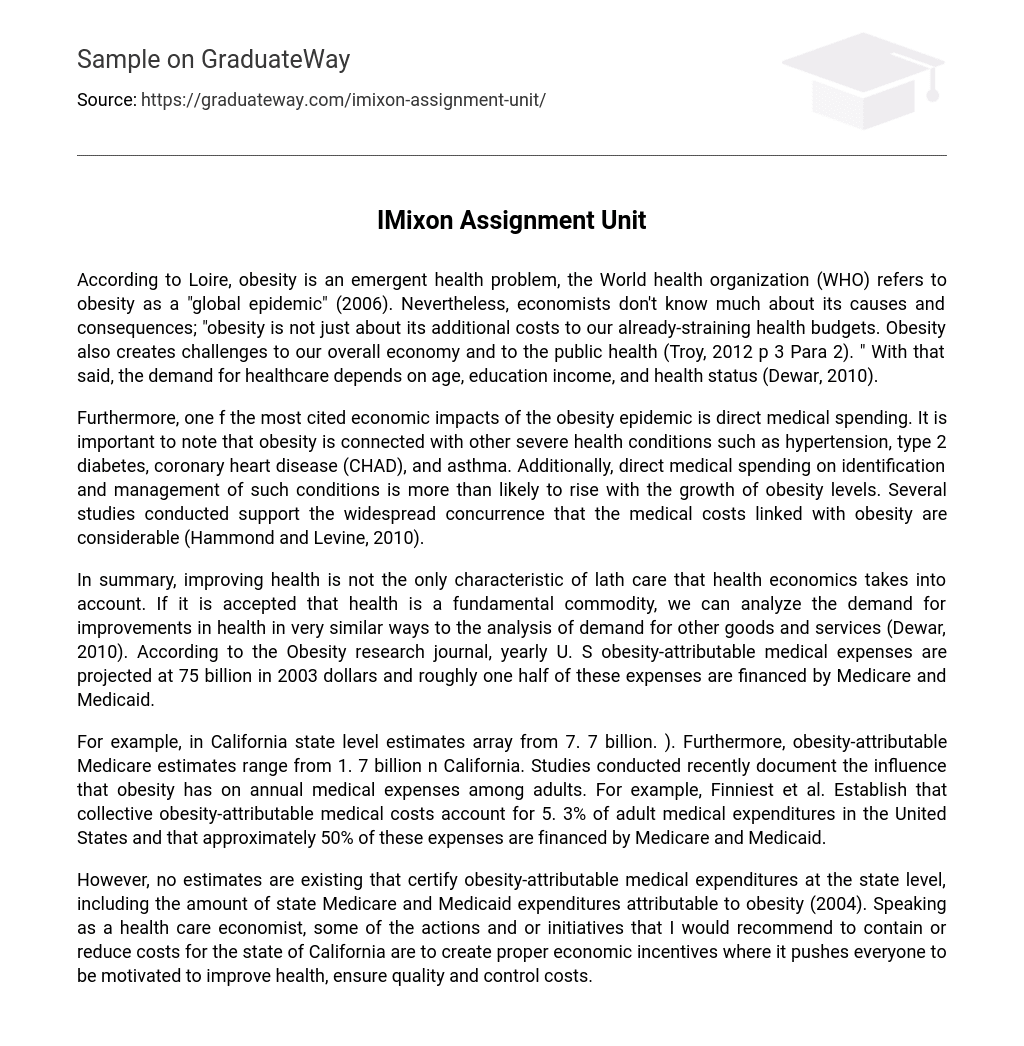According to Loire, obesity is an emergent health problem, the World health organization (WHO) refers to obesity as a “global epidemic” (2006). Nevertheless, economists don’t know much about its causes and consequences; “obesity is not just about its additional costs to our already-straining health budgets. Obesity also creates challenges to our overall economy and to the public health (Troy, 2012 p 3 Para 2). ” With that said, the demand for healthcare depends on age, education income, and health status (Dewar, 2010).
Furthermore, one f the most cited economic impacts of the obesity epidemic is direct medical spending. It is important to note that obesity is connected with other severe health conditions such as hypertension, type 2 diabetes, coronary heart disease (CHAD), and asthma. Additionally, direct medical spending on identification and management of such conditions is more than likely to rise with the growth of obesity levels. Several studies conducted support the widespread concurrence that the medical costs linked with obesity are considerable (Hammond and Levine, 2010).
In summary, improving health is not the only characteristic of lath care that health economics takes into account. If it is accepted that health is a fundamental commodity, we can analyze the demand for improvements in health in very similar ways to the analysis of demand for other goods and services (Dewar, 2010). According to the Obesity research journal, yearly U. S obesity-attributable medical expenses are projected at 75 billion in 2003 dollars and roughly one half of these expenses are financed by Medicare and Medicaid.
For example, in California state level estimates array from 7. 7 billion. ). Furthermore, obesity-attributable Medicare estimates range from 1. 7 billion n California. Studies conducted recently document the influence that obesity has on annual medical expenses among adults. For example, Finniest et al. Establish that collective obesity-attributable medical costs account for 5. 3% of adult medical expenditures in the United States and that approximately 50% of these expenses are financed by Medicare and Medicaid.
However, no estimates are existing that certify obesity-attributable medical expenditures at the state level, including the amount of state Medicare and Medicaid expenditures attributable to obesity (2004). Speaking as a health care economist, some of the actions and or initiatives that I would recommend to contain or reduce costs for the state of California are to create proper economic incentives where it pushes everyone to be motivated to improve health, ensure quality and control costs.





